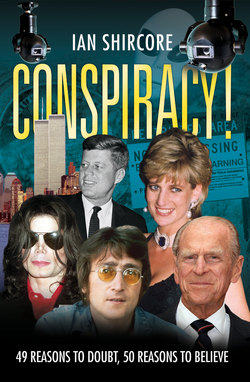Читать книгу Conspiracy! 49 Reasons to Doubt, 50 Reasons to Believe - Ian Shircore - Страница 9
На сайте Литреса книга снята с продажи.
REASONS TO DOUBT
ОглавлениеIn January 2010, it emerged that Lord Hutton had taken the unprecedented step of requesting, after his inquiry ended, that all the medical records, post mortem documents and police photographs relating to Dr Kelly’s death should be locked up for 70 years. Despite this, the post mortem report was released by the Ministry of Justice in October 2010. To everyone’s surprise, it seemed to make the official account of Dr Kelly’s suicide more, rather than less, plausible. Many people wondered why it had ever been held back, though Lord Hutton appeared to have thought this would help to protect Dr Kelly’s family.
The pressure that was building up on David Kelly certainly could have driven almost anyone to suicide.
When he died, there was an unopened letter on the desk in his study from a senior personnel man at the Ministry of Defence, Richard Hatfield, making it clear that he was going to have to shut up and stop leaking secrets or airing his opinions in public. If he didn’t, he’d be disciplined or even sacked.
The letter – the text of which is available on the Hutton Inquiry website – had already sat there, unread, for a week, but Dr Kelly had a pretty good idea what was inside. There had already been an interview with Richard Hatfield and various warning phone calls from other MoD people. The dodgy dossier business was bad enough, but the MoD was even more worried about what was to come next. Dr Kelly had written 40,000 words of a detailed book about his career and the powers that be did not want to see that published unvetted.
His attitude to his work was careful and measured, though defence ministry sources made some clumsy attempts to play down his importance or present him as a Walter Mitty character or a loose cannon. In the 1990s, his UN weapons inspectorate boss had nominated him for a Nobel Peace Prize. A colleague described him as having ‘a brain that could boil water’.
In June 2003, six weeks before his death, Dr Kelly had made his last trip to Iraq, to examine two trailers that were said to be mobile germ weapon plants. They weren’t, he concluded, though more recent information, mainly from WikiLeaks, showed there were plenty of chemical weapons still to be found. The scale may have been smaller than expected but it turns out that Saddam still had access to weapons of mass destruction right up to the time Iraq was invaded.
To many people’s surprise, America’s secret Iraq war logs, made public by WikiLeaks in September 2010, revealed that more WMDs, including chemical agents, mustard gas shells and ‘neuroparalytic weapons’, were still being discovered in Iraq in 2004, 2007 and right up to 2008 (see discussion at bit.ly/wikileakswired). Small-scale chemical weapons laboratories were also found and there was evidence that AQI (al-Qaeda in Iraq) had used chemical weapons in attacks on coalition soldiers.
